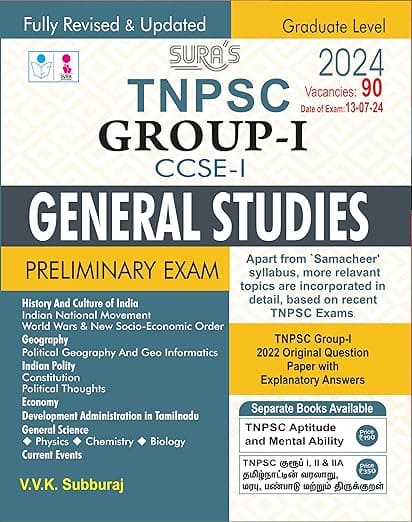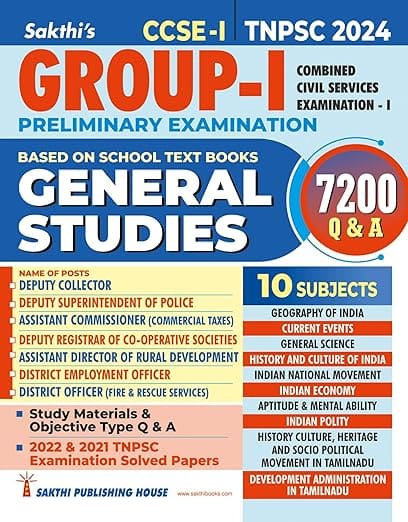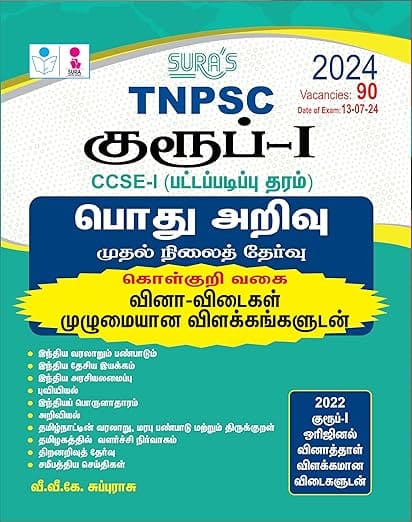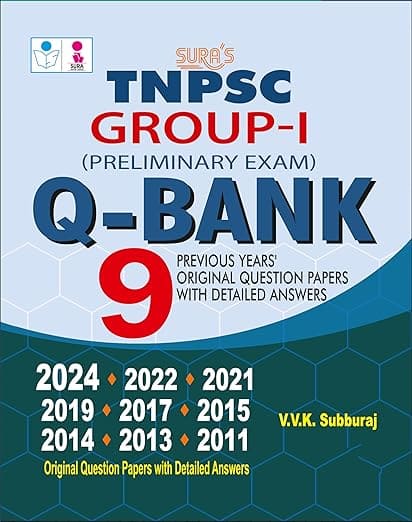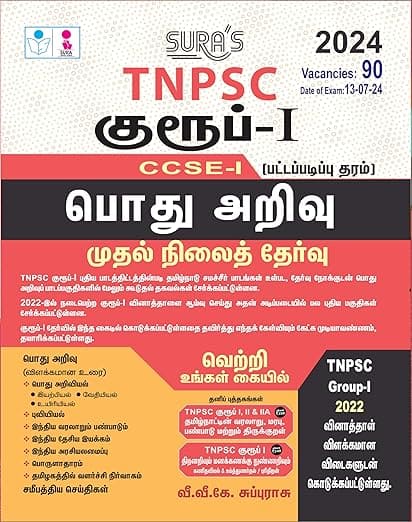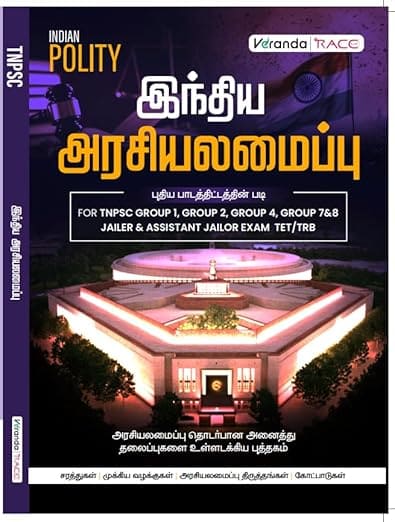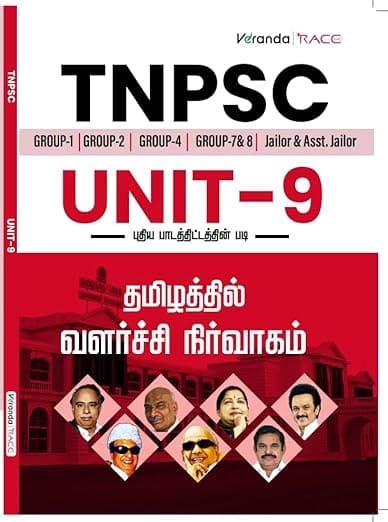Science : Term 3 Unit 3 : Air
Unit 3
Air

Learning Objectives
At the end of the lesson the students will be able to
* understand the properties of air through experiments
* understand the process of breathing in human beings
* identify the types of wind with respect to speed
Warm – up
Try Us Answer
Observe the pictures and answer the given question.
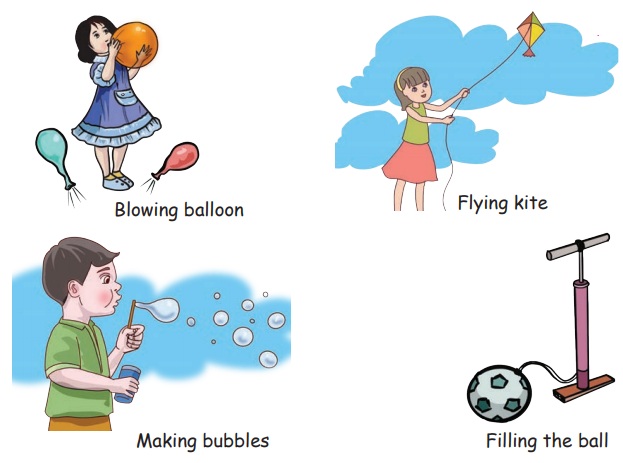
What is necessary for these activities?
Answer: Air
I. Properties of Air
Air is a natural resource. We cannot live without it. It is present around us. It has no definite shape and colour. Air has weight and it occupies space. We cannot see air but it can be felt. Air can flow everywhere.
Air occupies space
Note for teacher: Demonstrate all the given activities in the classroom.
Materials required: A tumbler, a bowl and water
Procedure :
Place a tumbler on the surface of the water kept in a bowl (see picture). Push the tumbler straight into the water. Now, tilt it slightly and push it into the water. Do you observe any difference? Yes air bubbles come out of water.
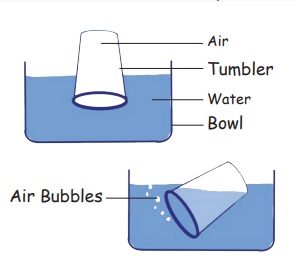
Through this experiment we can understand that air occupies space.
Hot air rises up
Tie a balloon to the mouth of a bottle as shown in the picture. Let the mouth of the bottle be narrow. Keep the bottle in a vessel containing hot water. Observe it for some time. The balloon expands. Why?
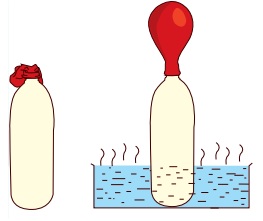
Due to the heat of the water in the vessel, air inside the bottle becomes hot. Hot air fills the balloon. Therefore the balloon expands.
What do you understand from this experiment? Hot air rises up.
Air has weight
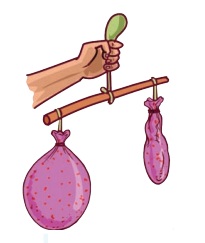
Procedure:
Take two balloons. Fill air in one balloon and keep the other balloon as it is. Make a measuring tool using a stick and tie the balloons on both the ends as shown in the pictures. Which balloon comes down and why? Do and find.
This experiment proves that air has weight
Try to Answer
a. Write true or false for the following statements.
1. Air occupies space but has no weight. (False)
2. Air is colourless. (True)
3. Air has definite shape. (False)
b. If we fill air in the ______ , it will change its shape.
1. jar 2. jug 3. ball
Answer : 3. ball
c. Which of the following is required for good health?
1. Dust 2. Clean air 3. Smoke
Answer : 2. Clean air
d. Colour the hot air balloon.
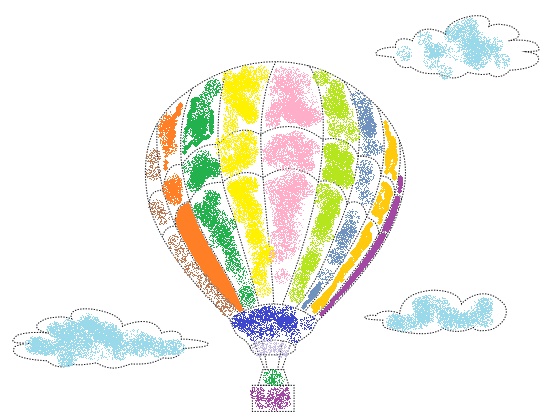
II. Air moves and pushes things
Light an incense stick in the corner of the classroom and observe. The smoke of the incense stick moves everywhere. The air pushes the smoke.
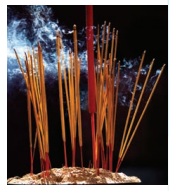
See the clouds in the sky that moves everywhere. Clouds move because of the movement of air.
Electricity is generated from wind with the help of the windmills.
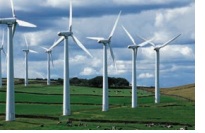
Let Us Do
Can you remove a small plastic ball from a glass vessel without physically touching it? Yes, you can. If you blow towards one wall of the glass very hard and the ball will be ejected out of the glass.
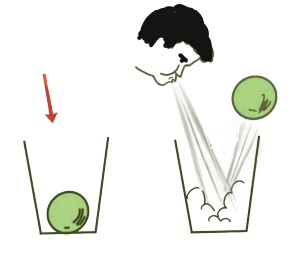
Let Us Do
Take a plastic bottle and fit a soggy newspaper pellet tightly in its mouth. On pressing the bottle, the pellet will come out with a loud POP sound.
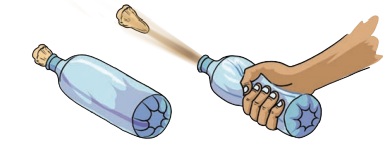
Let Us Try
Make a paper plane with waste paper and fly it in the air.
These activities conclude that air moves the things.
Air is required for burning
Light a candle and place it on a table. Now cover the lightning candle with a glass jar. Observe what happens?
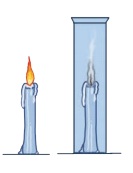
Air is required for burning things.
Air exerts pressure
When you drink fresh juice, you suck it through straw. We do this with the help of air.
How does a straw work?
Mix a few drops of ink in half a glass of water. Place a transparent straw inside the glass containing coloured water. Then place your finger on the top of the straw and pull the straw out of the liquid. What happens?

Then remove your finger from the straw. What happens? While your finger covers top of the straw, the liquid remains in the straw. When you remove the finger, the water flows out.
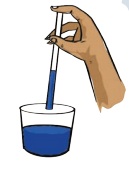
When you keep your finger on the straw, you are lessening the pressure of air over the straw. The greater pressure of air under the straw can hold the liquid inside the straw.
Let Us Do
Air Jack
Materials required: Empty plastic milk cover, a piece of thick string and an old pen body or pipe.
Procedure: Tie an old pen body or a pipe to the mouth of the milk cover with a string. Place 3 or 4 thin note books up on the plastic milk cover and slowly blow air into it with your mouth. As the cover gets inflated the books get raised. How does that work? The pressure that you exert with your mouth is limited. But the large area of the milk cover magnifies this pressure and lifts the books.
Buy bestselling books online

The above activity shows that ________
1. Air rises up on getting warm
2. Air is needed for burning
3. Air has pressure
Answer : 3. Air has pressure
III. Breathing (Inhalation and Exhalation)
Let Us Do and Discuss
* Keep your finger near your nose and breathe. Do you feel air on your fingers?
* Try to count how many times you breathe in a minute.
* Now jump 6-7 times. Is your breathing rate the same or is it faster?
* Run 100 meters and stop. Observe your breathing.
All living things need air for their survival. Plants breathe through leaves and fish breathe through gills. Humans breathe in and breathe out through lungs.
Inhalation is the process of taking the air inside and exhalation is the process of releasing the air outside. This cyclical process of inhalation and exhalation is called breathing.
We take oxygen and release carbon dioxide gas while breathing.
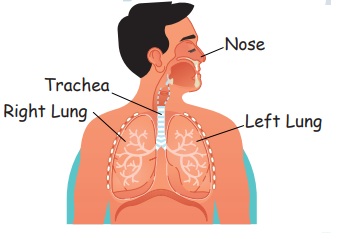
Think zone: Why the doctor checks your pulse when you are sick and ask you to breathe in and breathe out?
Do you know
When we breathe-in our chest raises up and when we breathe-out it lowers down.
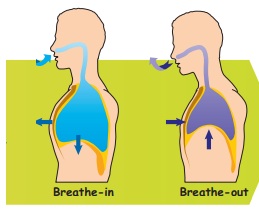
Let Us Do
Tick (✔) the one which breathes and cross (×) the one that does not breathe.
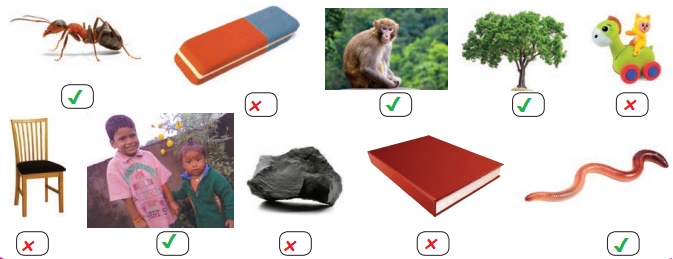
Let Us Write
Choose and write the correct answer for the following actions.

Try to Answer
The effect of exercise on breathing
Mathi and Mozhi practised various exercises like walking, skipping and running. They counted the number of times they breathed in one minute after each exercise and recorded their results in the bar diagram:
Bar diagram
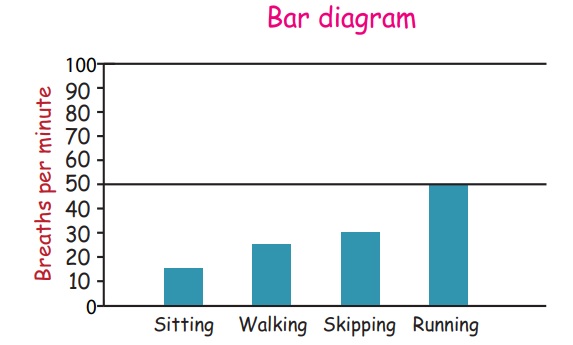
Activity
Look at the bar diagram.
a. Which activity raised the breathing rate the most? Running
b. Which activity do you think exercises the heart muscle the least? Sitting
c. Write ‘T’ if True and ‘F’ if False.
1. They breathed more number of times when they were walking. (False)
2. They breathed less number of times when they were sitting. (True )
3. They took 50 breaths per minute when they were running. (True )
4. The more vigorous (active) the exercise, the greater the number of breaths. (True)
IV. Moving Air
Let us Do:
Take some sand in your hand and release the sand. It falls in the direction of the wind.
Moving air is called wind. It moves across the surface of the Earth. Based on the speed of air, wind can be classified as breeze, storm and gale.
Do you know
Speed of the wind is measured using an instrument called ‘Anemometer’.
Breeze
A gentle wind is called breeze. Sea breeze and land breeze are the two types of breeze.
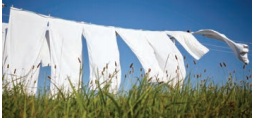
i. Sea breeze
The breeze that blows from the sea towards the land during day time is known as sea breeze. As the warm air from the land rises up and the cold air from the sea occupies the space over the land.
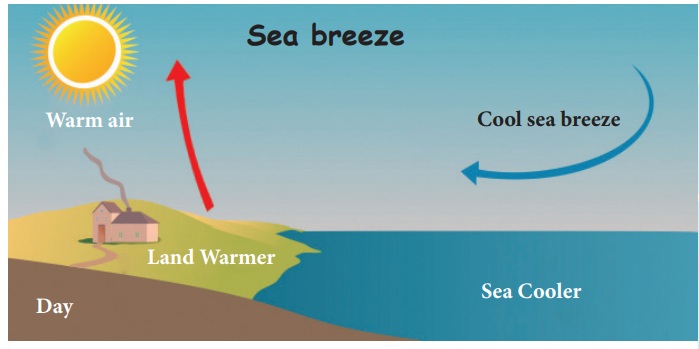
ii. Land breeze
The breeze that blows from the land towards the sea during night time is known as land breeze. The warm air from the sea rises up, and so the cold air from the land moves towards the sea.
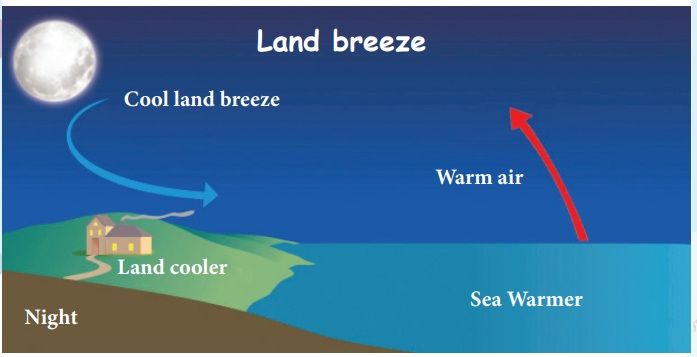
Storm
Strong wind is called storm. Sometimes storm can uproot trees and can destroy the crops.

Gale
A very strong wind is called gale. Gale is stronger than storm. It damages trees and buildings a lot.
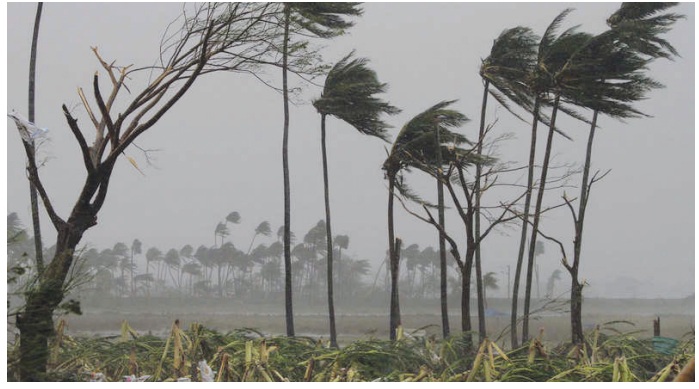
Note for teacher :
* Show the pictures of some natural disasters and discuss about them.
* Discuss about the consequences of leaving deep bore well open.
Let Us Connect
Match the following.
a. Breeze -Strong wind
b. Storm – Very strong wind
c. Gale – Gentle wind
Answer:
a. Breeze – Gentle wind
b. Storm – Strong wind
c. Gale – Very strong wind
Let Us Draw
Draw the movement of air for land breeze and sea breeze.
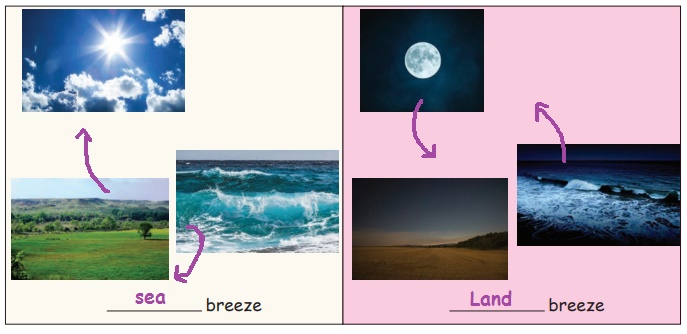
Try to Answer
Fill in the blanks.
1. Gentle air is called breeze.
2. We get electricity from wind using windmill.
3. The air that flows from the land towards the sea is Land breeze.
4. Sea breeze is the air moving from the sea towards the land.
Let Us Do
Take two cups. Fill one with sand and the other with water. Leave them in the sunlight for about an hour. Keep one hand in the cup with sand and other hand in the cup with water.
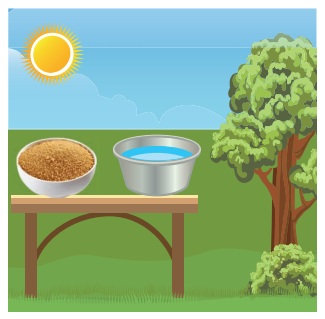
Which one is hotter?
Sand / Water
Answer : Sand
Now keep both the cups in the shade for a while. Now put your fingers in both the cups once again.
Which cup is cooled faster?
Sand / Water
Answer : Sand
Try to Answer:
What will you do during disaster?
( I will / I will not )
a. I will not watch TV when it rains heavily.
b. I will follow the warnings.
c. I will not stand under a tree when heavy wind blows.
EVALUATION
I. Fill in the blanks using the given words.
(air, weight, raises, lungs, inhale)
1. Air has weight.
2. Things need air for burning.
3. The process by which we breathe in air is known as inhale.
4. The organ that helps us to breathe is lungs .
5. When we breathe in air, the chest raises up.
II. Write ‘T’ if True and ‘F’ if False.
1. Air is nowhere. (F)
2. Air fills the empty space. (T)
3. Clouds move because of the movement of air. (T)
4. A very strong wind is called gale. (T)
5. We release oxygen during breathing. (F)
III. Circle the odd one and answer the question.
1. Balloon, Cycle tube, Football, Cricket ball. Why is it different from the rest?
We cannot blow air into it.
2. Kite, Balloon, Stone, Feather,
Why stone differs from the rest?
Stone does not fly or float in the air.
IV. Answer the following.
1. What are the properties of air?
Air has no definite shape and colour. Air has weight and it occupies space.
2. Write the use of windmill.
The windmill is used to generate electricity from wind.
3. What is breathing?
Breathing is the process of taking the air inside and releasing the air outside.
4. Write the processes involved in breathing.
1. Inhalation 2. Exhalation
5. Write the types of wind based on the speed of air.
1. Breeze 2. Storm 3. Gale
6. Differentiate between land breeze and sea breeze.
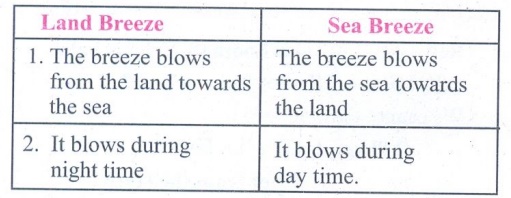
Land Breeze
1. The breeze blows from the land towards the sea
2. It blows during night time
Sea Breeze
1. The breeze blows from the sea towards the land
2. It blows during day time.
Warm – up
Try Us Answer
Observe the pictures and answer the given question.

What is necessary for these activities?
Answer: Air
Air occupies space
Note for teacher: Demonstrate all the given activities in the classroom.
Materials required: A tumbler, a bowl and water
Procedure :
Place a tumbler on the surface of the water kept in a bowl (see picture). Push the tumbler straight into the water. Now, tilt it slightly and push it into the water. Do you observe any difference? Yes air bubbles come out of water.

Through this experiment we can understand that air occupies space.
Hot air rises up
Tie a balloon to the mouth of a bottle as shown in the picture. Let the mouth of the bottle be narrow. Keep the bottle in a vessel containing hot water. Observe it for some time. The balloon expands. Why?

Due to the heat of the water in the vessel, air inside the bottle becomes hot. Hot air fills the balloon. Therefore the balloon expands.
What do you understand from this experiment? Hot air rises up.
Air has weight

Procedure:
Take two balloons. Fill air in one balloon and keep the other balloon as it is. Make a measuring tool using a stick and tie the balloons on both the ends as shown in the pictures. Which balloon comes down and why? Do and find.
This experiment proves that air has weight
Try to Answer
a. Write true or false for the following statements.
1. Air occupies space but has no weight. (False)
2. Air is colourless. (True)
3. Air has definite shape. (False)
b. If we fill air in the ______ , it will change its shape.
1. jar 2. jug 3. ball
Answer : 3. ball
c. Which of the following is required for good health?
1. Dust 2. Clean air 3. Smoke
Answer : 2. Clean air
d. Colour the hot air balloon.

Let Us Do
Can you remove a small plastic ball from a glass vessel without physically touching it? Yes, you can. If you blow towards one wall of the glass very hard and the ball will be ejected out of the glass.

Let Us Do
Take a plastic bottle and fit a soggy newspaper pellet tightly in its mouth. On pressing the bottle, the pellet will come out with a loud POP sound.

Let Us Try
Make a paper plane with waste paper and fly it in the air.
These activities conclude that air moves the things.
Air is required for burning
Light a candle and place it on a table. Now cover the lightning candle with a glass jar. Observe what happens?

Air is required for burning things.
Air exerts pressure
When you drink fresh juice, you suck it through straw. We do this with the help of air.
How does a straw work?
Mix a few drops of ink in half a glass of water. Place a transparent straw inside the glass containing coloured water. Then place your finger on the top of the straw and pull the straw out of the liquid. What happens?

Then remove your finger from the straw. What happens? While your finger covers top of the straw, the liquid remains in the straw. When you remove the finger, the water flows out.

When you keep your finger on the straw, you are lessening the pressure of air over the straw. The greater pressure of air under the straw can hold the liquid inside the straw.
Let Us Do
Air Jack
Materials required: Empty plastic milk cover, a piece of thick string and an old pen body or pipe.
Procedure: Tie an old pen body or a pipe to the mouth of the milk cover with a string. Place 3 or 4 thin note books up on the plastic milk cover and slowly blow air into it with your mouth. As the cover gets inflated the books get raised. How does that work? The pressure that you exert with your mouth is limited. But the large area of the milk cover magnifies this pressure and lifts the books.

The above activity shows that ________
1. Air rises up on getting warm
2. Air is needed for burning
3. Air has pressure
Answer : 3. Air has pressure
Let Us Do and Discuss
* Keep your finger near your nose and breathe. Do you feel air on your fingers?
* Try to count how many times you breathe in a minute.
* Now jump 6-7 times. Is your breathing rate the same or is it faster?
* Run 100 meters and stop. Observe your breathing.
Do you know
When we breathe-in our chest raises up and when we breathe-out it lowers down.

Let Us Do
Tick (✔) the one which breathes and cross (×) the one that does not breathe.

Let Us Write
Choose and write the correct answer for the following actions.

Try to Answer
The effect of exercise on breathing
Mathi and Mozhi practised various exercises like walking, skipping and running. They counted the number of times they breathed in one minute after each exercise and recorded their results in the bar diagram:
Bar diagram

Activity
Look at the bar diagram.
a. Which activity raised the breathing rate the most? Running
b. Which activity do you think exercises the heart muscle the least? Sitting
c. Write ‘T’ if True and ‘F’ if False.
1. They breathed more number of times when they were walking. (False)
2. They breathed less number of times when they were sitting. (True )
3. They took 50 breaths per minute when they were running. (True )
4. The more vigorous (active) the exercise, the greater the number of breaths. (True)
Let Us Connect
Match the following.
a. Breeze -Strong wind
b. Storm – Very strong wind
c. Gale – Gentle wind
Answer:
a. Breeze – Gentle wind
b. Storm – Strong wind
c. Gale – Very strong wind
Let Us Draw
Draw the movement of air for land breeze and sea breeze.

Try to Answer
Fill in the blanks.
1. Gentle air is called breeze.
2. We get electricity from wind using windmill.
3. The air that flows from the land towards the sea is Land breeze.
4. Sea breeze is the air moving from the sea towards the land.
Let Us Do
Take two cups. Fill one with sand and the other with water. Leave them in the sunlight for about an hour. Keep one hand in the cup with sand and other hand in the cup with water.

Which one is hotter?
Sand / Water
Answer : Sand
Now keep both the cups in the shade for a while. Now put your fingers in both the cups once again.
Which cup is cooled faster?
Sand / Water
Answer : Sand
Try to Answer:
What will you do during disaster?
( I will / I will not )
a. I will not watch TV when it rains heavily.
b. I will follow the warnings.
c. I will not stand under a tree when heavy wind blows.

